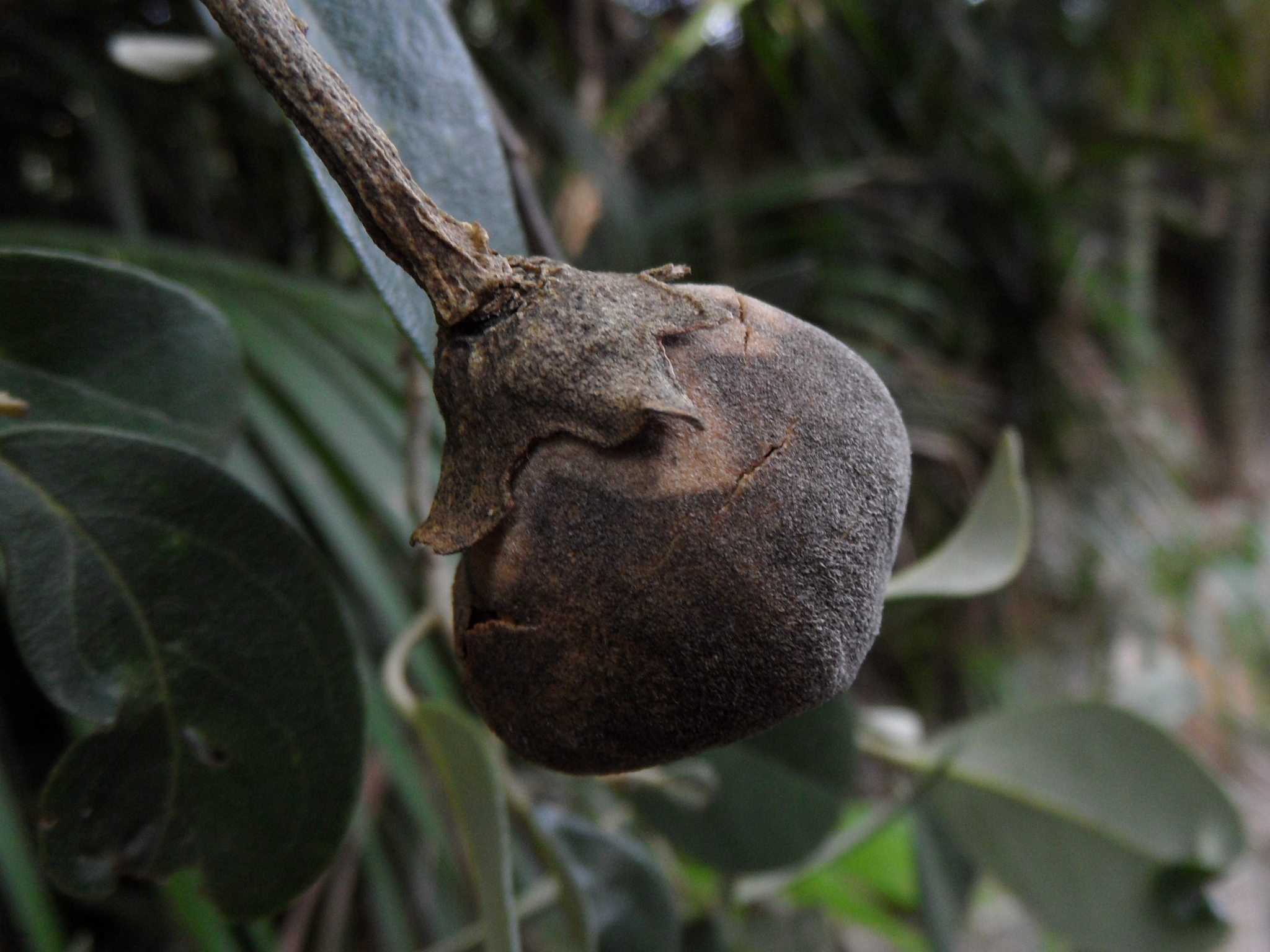
A dense, conical, evergreen Tree to about 15 m tall. Leaves ovate to lanceolate, mostly 6-10 cm long, 4-5 cm wide with a blunt tip, scaly above but paler and with more pronounced scurfy scales below. Leaf stalk to 2 cm long. Epicalyx of 3-4 fused bracts, each about 5 mm long, soon shed. Sepals 5, 1-1.5 cm long, fused at the base. Flowers solitary, rosy pink, the 5 petals bending back at maturity, stamens in a central column shorter than the petals; Nov.-Jan. Fruit a capsule 3-4 cm long, about 3 cm wide, the 5 inner chambers lined with sharp hairs; seeds orange-red, kidney-shaped.
Norfolk Island, Lord Howe Island
Known as White Oak on Norfolk Island where it is the second most abundant tree apart from Araucaria heterophylla, the Norfolk Island Pine. There is a remarkable hedge-like wind-pruned naturally growing specimen on the island.
P. Green (Kew Bulletin 45:241, 1990) remarks: 'The epithet for this species has been spelt in two ways, patersonia and patersonii. The latter, in the genitive case, would be the usual form for a plant named after someone, in this case Col. William Paterson (1755-1810), one-time Lieutenant-Governor of New South Wales, who was on Norfolk Island between 1791 and 1793 and sent the seed from there to Britain in 1792. However, ... Sims (1804) stated that, . . . "This plant has been known in a few collections that possess it by the name Patersonia'. Patersonia, therefore, as an intentional substantive name in apposition, seems to be the correct epithet".
Hibiscus-like flowers; white-specked, scaly leaves; dense, regular habit.
VIC: Coburg (De Chene Reserve); Melbourne (Royal Botanic Gardens Victoria (Melbourne Gardens) Tennyson Lawn); Bendigo ('Fortuna'); Fitzroy (Gds); St Arnaud (Queen Mary Gardens); S Melbourne (N Sturt St); Sunshine (HV McKay Memorial Gardens); Williamstown (Williamstown Botanic Gardens); Werribee (Werribee Park).
Green (1994).
P. queenslandica (syn. L. patersonia subsp. bracteatus (Benth.) P.S. Green) occurs in E Queensland.
Source: (1997). Hibiscus. In: . Horticultural Flora of South-eastern Australia. Volume 2. Flowering plants. Dicotyledons. Part 1. The identification of garden and cultivated plants. University of New South Wales Press.
